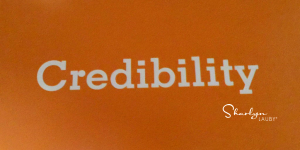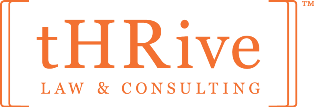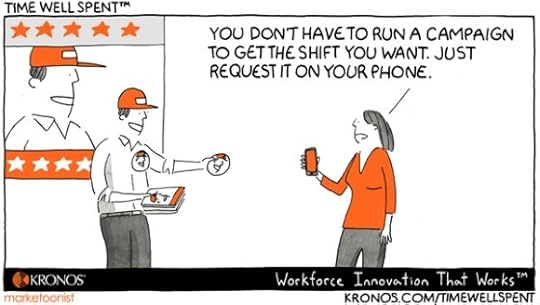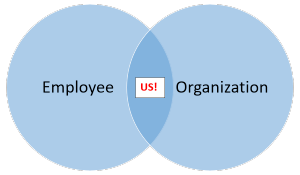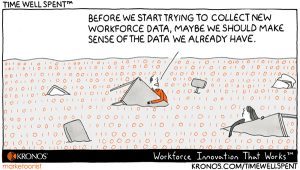Sharlyn J. Lauby's Blog, page 148
October 27, 2016
There Are Many Ways to Practice Mindfulness
Over the past few months, I’ve shared with you some information about mindfulness and how it can help us to be better leaders. I remain fascinated by the practice.
With all of the talk about work stress and burnout, I wonder if mindfulness practices can be used in a wellbeing program. So I decided to do a little experiment and practice mindfulness for a month. Here’s what I learned:
We have more distractions in our lives than we realize. It was amazing to me when I started this exercise how hard it was to start. I wanted to do it. I even scheduled it on my calendar. But I found that “stuff” popped up all the time. I was immediately tested on making mindfulness a priority. And if you don’t make it a priority, you won’t get the benefit.
It seems like a simple thing to do. It’s actually very difficult. We’re so used to being on the go all the time. To sit in focused silence for ten minutes is difficult. It made me realize how little time I give myself to just focus – a practice I will be changing as a result.
Don’t let the words limit you. Often the concepts of mindfulness and meditation are used interchangeably. And that can be okay. It could be helpful to understand the differences when deciding what’s right for you. Mindfulness can be defined as the state of being conscious or aware of something. I’ve seen a definition of meditation as doing something good for yourself. There’s also mindfulness meditation and deep breathing meditation, combining activities.
Practice at the time that works for you. Many articles suggest practicing first thing in the morning. Personally, I found practicing at the end of the day a great way to put the work day behind me. It helped me leave “work mode” and relax.
Technology can offer some options. I know we have a tendency to think that technology is a contributor to the problem, but apps and wearables can help us practice mindfulness. I love the new breathing option on my Apple Watch. In fact, I actually like it more than some of the apps out there. It fit with my lifestyle better.
You can practice using guided or unguided sessions. The plus side of guided sessions is … they’re designed to help and educate. The downside is, if you don’t like the person’s voice, then the session can seem like an eternity. The Meditation Studio app (available via iTunes) uses different voices, so the sound variety could be welcomed.
Decide the right length of time for your session. The Headspace app (available via iTunes and Google Play) offered 10-minute sessions. Meditation Studio started with 3-minutes sessions and moved up to 10. Personally, I liked the phased-in approach a little more. It’s about finding what works for you.
Posture matters! One of the things that all of these apps and practices stress is good posture – sitting up straight, feet on the floor, etc. I did notice a difference in my sessions when I was a home using a chair with excellent back support and in a hotel room with various degrees of sitting comfort.
The final decision about mindfulness will take some time. I’ve been working on this for a month and I don’t have all of my answers yet. I’m still trying new things. Be prepared to give it some time.
But I do know that mindfulness offered me a way to “turn off” at the end of the day. Or “get focused” when I was faced with a busy day. And that’s valuable. It benefits my health and improves my work. I can discuss mindfulness concepts and benefits at great length but, ultimately, it’s up to you.
Image taken by Sharlyn Lauby after the HR Technology Conference in Chicago, IL
The post There Are Many Ways to Practice Mindfulness appeared first on hr bartender.






October 25, 2016
#FLSA Changes: How to Tell Employees They’re Moving from Salary to Hourly
A few weeks ago, I answered a question from a reader about converting from salary to hourly status as a result of the upcoming changes to the Fair Labor Standards Act (FLSA.) It occurred to me after I published the post that there might be organizations that are postponing or struggling with these conversations. So here are a few things to consider when it comes time to talk with employees about the changes and requirements of moving from salary to hourly.
Don’t delay. While the changes don’t go into effect until December 1, 2016, you don’t have to wait until the day prior to have this conversation with employees. Even if you have the conversation now but it’s going into effect later, give employees the information they need and the time to process the change.
Draft your talking points. This is a big change. Think about all of the things that need to be said and allow time for questions. Have a few details about the FLSA change in case employees ask.
Decide who needs to be in the room. Sometimes walking into a room with your manager and HR can be a bit intimidating, but this is one of those conversations where having HR field any logistical questions could be valuable, especially when it comes to payroll and overtime.
Assure the employee they are valuable. One of the biggest concerns we’re hearing about this update is the feeling that employees perceived being paid hourly makes them less valuable. Possibly because the employee was told being salaried is great when they initially took the job.
Allow the employee to vent. It can be uncomfortable, but let employees process the change. They might be emotional, confused, or angry. Neither the company or the employee created this situation. Empathize with the employee.
Give the employee a chance to ask questions. If you have more than one employee impacted by this change, it might make some sense to put all of the employee questions into a FAQ that can be distributed after the meetings. Individual situations would still be addressed privately.
Follow-up with the employee. It’s possible that employees will have comments and/or questions a few days after the meeting. Let employees know that you want to touch base after a couple of days to answer any follow-up questions. If the employee has none, no worries. But it lets the employee know that you care.
Organizations and employees might be totally against this new FLSA update and moving from salary to hourly, but it doesn’t change the fact that the update is taking place. Delaying the conversation doesn’t make it sting any less. Communicate with employees so they can process the information and make plans. They might not like the message but they will appreciate your respect for them.
P.S. If you’re a member of the Society for Human Resource Management (SHRM), they’re created a FLSA Overtime Rule Resources Page which includes an implementation checklist and tips how to talk with employees about the change. This is great because you can never have too many resources during times like these.
Image taken by Sharlyn Lauby at the 34th Street Graffiti Wall in Gainesville, FL
The post #FLSA Changes: How to Tell Employees They’re Moving from Salary to Hourly appeared first on hr bartender.






October 23, 2016
HR Failed to Investigate an Incident – Ask #HR Bartender
If you get a group of business professionals together, the stories begin. We all have a “I thought I had seen it all, then this happened…” story. Here’s one of those situations.
I’m a newly promoted supervisor working in the prison system. I have endured two assaults from two different inmates. I have documented reports on file with the department regarding both incidents.
I expressed to prison administration that I wanted to file charges against the inmates. I was told that an investigation needed to be conducted before I’m able to bring forth charges. To date, I have never been interviewed about the incident or told that an investigation has been conducted. I continue to ask weekly and have never received an answer so I could proceed to press charges.
First of all, I certainly hope that the person writing this note is okay. Assault is serious.
While some of this situation could be unique to the prison system, employees being assaulted isn’t necessarily industry specific. When I worked for the airline, a customer punched a ticket agent over a flight delay. So, while we can’t get into specifics, I think we can keep this conversation at a high level and still benefit from the discussion.
To help us with this situation, I asked our friend Kate Bischoff to share her knowledge. Kate is an employment attorney and HR consultant at tHRive Law & Consulting LLC. She’s shared her experience with us before – “Should I Quit or Wait to Get Fired” is one of my favorites.
Please remember that her comments should not be construed as legal advice or as pertaining to any specific factual situations. If you have specific detailed questions, they should be addressed directly with your friendly neighborhood labor attorney.
Kate, if an employee is harassed, bullied, or assaulted by a customer, supplier, or another employee, what should they do?
 [Bischoff] Tell a manager. Managers are the employer. They execute the organization’s vision and give employees day-to-day work direction. Because they have this role, managers are also obligated to act as the employer when issues like this come up. That action is to do something to make the conduct stop. A manager may go to HR or other senior managers to take action.
[Bischoff] Tell a manager. Managers are the employer. They execute the organization’s vision and give employees day-to-day work direction. Because they have this role, managers are also obligated to act as the employer when issues like this come up. That action is to do something to make the conduct stop. A manager may go to HR or other senior managers to take action.
The law is clear – when a third party (customer, vendor, independent contractor, etc.) harasses an employee, an employer can still be held liable for their conduct when the employer doesn’t take steps to first prevent and then put an end to the conduct once they learn of it. This means organizations should have a harassment policy that includes harassment and/or other inappropriate conduct by third-parties and includes a mechanism to provide employees ways to report inappropriate conduct. One of the most common and effective ways to do this is to tell a manager.
While bullying itself may not be against the law, employers are not free to let it happen, even when the bullying is at the hands of a valued customer. Employers that work to make the employment environment free from bullying behavior are better employers.
Does the organization have an obligation to investigate? Why or why not?
[Bischoff] Organizations have an obligation to do something to make the conduct stop. Investigating is often the first step as the employer needs to know what is going on or what has happened. An impartial and thorough investigator can determine if the conduct occurred and whether an employer is obligated to do something about it. Doing something may include:
Disciplining other employees,
Ceasing business with a customer, or
Shifting responsibilities (without demoting or otherwise negatively affecting the subject employee) so that the employee is no longer in the line of fire.
Does the organization have an obligation to tell the person bringing the claim what’s going on? If not, why?
[Bischoff] No. Organizations are not obligated to keep anyone up to speed on the details on an investigation. It is natural for those who come forward to want to know what is going on, but organizations should not share the details. The details are ripe for fodder around a water cooler and can create an unnecessary distraction to the entire organization. Instead, they should work hard to end the conduct and tell individuals that they are doing so.
More importantly, organizations should thank the people who come forward and explain the organization’s anti-retaliation policies. Organizations that create an atmosphere where employees feel comfortable bringing concerns forward are better positioned to protect themselves.
If an employee decides to pursue outside action against someone (i.e. customer, coworker, supplier, etc.) who has allegedly done them harm, do they have an obligation to tell the company? Why or why not?
[Bischoff] No, but they should. No organization likes to be caught off guard, and finding out about a lawsuit between an employee and a customer is likely to do just that. Even if the employee thinks the organization has no dog in the fight, employees should understand that the organization will likely be impacted by outside action since the incident happened there or was related due to its business dealings.
This is not to say that an organization can discipline or punish the employee. In many cases, this would be unlawful, but organizations will still want to know. They may want to help support the employee and prepare for the impact on the business. Even if not a party, organizations will still get asked questions.
Organizations have an obligation to make harassing/bullying behavior stop - @k8bischHRLawClick To Tweet
Final question. In your experience, what role can human resources play in helping the organization heal when violence happens in the workplace?
[Bischoff] Human resources can do great things to help an organization heal by bringing employees together to express their concerns individually or as a group and explaining what the organization is doing to improve conditions so situations like this don’t happen again. The more open and transparent an HR team can be about how the organization addresses concerns and its commitment to a safe working environment, the better.
A huge thanks to Kate for sharing her knowledge on whether HR should investigate this incident. I know this wasn’t an easy situation. If you want to read more of Kate’s insights, be sure to check out her blog. It’s a must read.
I’ve said this before: Employees need to feel they can report concerns to the organization. AND that the organization will properly investigate the situation. Not only is there a liability to ignoring an employee’s complaint, it’s just not the right thing to do.
Image taken by Sharlyn Lauby after speaking at a very credible corporate event in Dallas, TX
The post HR Failed to Investigate an Incident – Ask #HR Bartender appeared first on hr bartender.






October 21, 2016
If You Don’t Ask, You Don’t Get – Friday Distraction
(Editor’s Note: Today’s post is brought to you by our friends at Kronos, a global provider of workforce management and human capital management cloud solutions. For the second consecutive year, Great Place to Work placed Kronos on its list of the 50 Best Information Technology Companies to work for in India. Congratulations! And enjoy the post.)
I will totally admit I’m a news and politics junkie. I find the election process fascinating. That being said, there are moments when even I need to step away from campaign season.
Today’s Time Well Spent from our friends at Kronos reminded me that sometimes we can try too hard to get what we want. Sometimes all we need to do is ask.
I’ve sat in sales meetings before where the conversation was about “asking for the sale.” If you don’t ask, you don’t get. I’ve had employees come into my office complaining that they didn’t get something from their manager. When I asked them “When did you tell your manager that you needed this?”, they hadn’t. My response would be, “How do you expect them to know, if you don’t ask?”
Asking for help and resources isn’t easy. We need to do our research, have our facts together, and present our case in a way that the audience will respond favorably. Some might call that “campaigning.”
I think it’s important that we champion our cause. But there’s a tipping point we must be aware of. Not only do we need to understand when we’re pushing too hard, but we need to be aware of the tools that can help us get our point across.
Building networks and relationships play a valuable role in getting stuff done. So does technology. It’s important for us to use our “asks” wisely so we don’t overspend our resources.
The post If You Don’t Ask, You Don’t Get – Friday Distraction appeared first on hr bartender.






October 20, 2016
The You, Me and We of Career Development
I’ve mentioned before that I have a tendency to stockpile magazines so I can read during flights. This time of year is conference season which tends to be my busiest, with a lot of travel from September through the end of the year.
Well, this year I have even more travel than usual. During a recent flight, I was reading some old issues of Training Magazine on my way to Austin for the Great Place to Work’s Small and Medium Business Conference and it occurred to me that today’s career development efforts can be summarized into three areas of responsibility.
You. Since I’m a human resources pro, I’m going to say “you” is the employee. The employee has some responsibility in developing their career. First, employees need to understand and communicate what they want to do with their career. They also need to share what things they are willing to do on their own and where they need help from their employer. Employees should regularly evaluate their career goals, tell the company when they don’t feel their goals are being met, and work with the organization to develop a solution to the situation.
Me. This is the company. It includes HR and the employee’s manager. The organization has obligations where an employee’s career is concerned. It starts during the hiring process, where we often talk about the future. We have a responsibility to train employees for their current roles. It’s in the company’s best interest to develop employees for future openings as others leave or retire. We also should tell employees when the company isn’t able to support an employee’s future goals.
We. And this is our combined efforts. Not only the training and conversations I’ve mentioned, but a partnership between employees and managers to create positive, rewarding careers. The company’s career development programs and processes need to work. Everyone needs to be accountable. Because when they are, the organization can hire the best talent and employees can achieve their professional goals. Everybody wins, including candidates who want to know that, if they come to work for the company, the organization will partner with them.
The focus here has to be on the WE. Organizations must make career development conversations a part of their culture. Employees must know what’s expected of them when they get hired. So the partnership needs to be a part of the pre-hire conversation. The last thing an employee wants is to get hired and say, “I didn’t know the company wasn’t going to develop me.” And the company doesn’t want to think, “I didn’t realize the employee wasn’t going to own their career.” Assumptions cannot be made about the career development partnership.
As the talent wars heat up, organizations might choose to hire candidates and develop their skills. This makes the career development conversation even more important. Having honest, two-way communication about careers and the future creates buy-in from everyone.
Image taken by Sharlyn Lauby in a courtyard of Caesar’s Palace during a recent Lunar New Year
The post The You, Me and We of Career Development appeared first on hr bartender.






October 18, 2016
10 Activities that Encourage Employees to Take the Lead in Their Development
(Editor’s Note: This post is brought to you by HighGround, the employee development and engagement platform leader. They were named one of the Next Great Technology Companies at this year’s HR Technology Conference and Expo in Chicago. Enjoy the post!)
We’ve talked a lot about the need for employees to own their careers. But how can organizations actually make it happen? If it were as easy as saying – “Poof! Everyone is in charge of their career” – well, we’d all do it. The reality is, creating a culture where employees are driving their own development involves more than just employees.
Employee-driven career development involves the entire organization. In today’s post, I wanted to give you a list of activities your company can implement that will encourage employee development. The goal is to shift the role of your management team. It’s not going to reduce their responsibility, but it allows them to spend more time empowering employees to take the lead in their own development.
5 Things Companies Should Do for Their Management Teams
Organizations place a tremendous amount of responsibility on their managers. One of the biggest roles a manager plays is that of coach. Their working relationships can empower and engage employees to do their best work. But that doesn’t come without an investment into management development. Here are five activities that companies should do to develop managers (so they can develop employees.)
Set expectations to ensure your mission, vision and values are the drivers behind all performance-related conversations. When someone becomes a manager, they need to understand their role in the organization. Managers are responsible for making sure the mission, vision, and values of the organization aren’t compromised. They need to hold themselves accountable to demonstrating organizational values.
Give managers access to technology solutions that will reduce administration time. Being a manager involves some compliance and administration. But these responsibilities don’t have to be completed inefficiently or consume a majority of a manager’s time. And they shouldn’t! Using technology strategically can free up managers so they spend more time where it counts – with employees.
Provide training on how to deliver real-time feedback. Regardless of your performance review process, employees need feedback. Most of the time that feedback comes from their manager. Delivering specific feedback in a timely fashion can make a difference in employee performance. Check-in conversations and feedback that take place in real-time will maximize their impact and ultimately, improve manager and employee development.
Train managers to be better coaches and mentors so they can help employees grow their skills. Many managers were promoted because they were top performers in their roles; however, this doesn’t mean they automatically have the necessary people skills. In addition to feedback training, managers should be given the tools to coach and mentor employees in career development (i.e. goal setting, decision-making, etc.) Managers need to not only identify and train the future leaders of the organization.
Encourage managers to solicit feedback from their employees and colleagues. The organization needs to make an investment in their managers. In turn, managers need to make an investment in themselves. They should ask peers and employees for feedback about their performance so they can develop themselves.
However, managers aren’t the only people responsible for development. Employees need to own some of their development.
5 Things Companies Should Do for Employees
If organizations want employees to have responsibility for their career development, they need to set the expectation early and give employees the tools they need to be successful. Having employees take the driver’s seat in their career isn’t exactly a new concept. What’s challenging is taking it beyond the words to action. Here are five activities that organizations should do to develop employees (so they can develop themselves.)
Set expectations for values and accountability before onboarding even starts. Candidates should be told during the hiring process the company’s level of expectation. Self-learning should be part of organizational values and supported at every level of the organization.
Provide training on how to deliver real-time feedback. While a lot of feedback comes from an employee’s manager, it’s not the only place to receive valuable feedback. Every employee should be proficient in delivering relevant feedback. And trained in active listening to accept real-time feedback from others.
Work with employees to set relevant, challenging but achievable goals. This is another area that is often placed upon the manager but doesn’t have to be. At least 100 percent of the time. Employees should be able to draft goals and review them in a coaching session with their manager. This gives employees the tools to always be developing their careers.
Give employees a voice to share ideas and concerns. Most organizations have a well-defined downward communication funnel. Companies need to have an equally well-defined upward communication process using both anonymous and face-to-face feedback. Because the only way that organizations will improve is through two-way communication.
Recognize and reward employee performance and accomplishments. Employees need to know how they’re doing with respect to performance. “No news is good news” isn’t a way to communicate. Managers and employees need to give each other positive feedback in a medium that the employee prefers. If the company doesn’t know how an employee prefers to be recognized, they should ask.
Company Culture is Key for Development
You probably noticed that there were some activities that applied to both managers and employees, like values, accountability, feedback, training, etc. That’s because those activities are important components of company culture. Organizations that want employees at every level to own their career development need to create cultures that engage both managers and employees.
When managers and employees are engaged, managers are coaching employees to perform at a high-level and employees are empowered to take the lead in their development. The organization takes action when feedback and suggestions are made to improve the working environment. It’s a win for everyone.
P.S. – – If you’re interested in learning how human resources can influence a culture where employees take ownership of their careers, the HighGround team is hosting a webinar on “How HR Can Build a Self-Energized Workforce for a More Sustainable Business.” It’s scheduled for Tuesday, October 25 at 3p Eastern. You can find registration details here. And if you can’t make it on Tuesday, the webinar will be recorded, so register to get a link to the archive. Hope you can join us!
The post 10 Activities that Encourage Employees to Take the Lead in Their Development appeared first on hr bartender.






October 16, 2016
Offered Same Job by Two Different Recruiters – Ask #HR Bartender
This is not a farfetched story. With the job market heating up, finding top talent is a very competitive business. Today’s reader note deals with in-house and external recruiters sourcing the same people.
I haven’t been able to find someone discussing this situation. I interviewed for a job with a hiring manager. Couple of days later, a third-party recruiter cold-called me for the same position.
Is it more likely that I botched the interview and the company is reaching out or that the recruiter is over eager trying to fill a job without knowing if it’s still open?
Since we don’t have the opportunity to chat with the hiring manager or the third-party recruiter to directly answer question, I asked two super smart hiring pros to share their expertise. Mary Faulkner is the director of talent acquisition at a water utility in Colorado. She is also the author of Surviving Leadership, a leadership development blog that is a must-read for business professionals. Alan Berger is an executive recruiter with 25+ years of employment lifecycle experience. The HR search practice he oversees at Steven Douglas Associates, a mix of contingency and retained search from the mid to senior level and is almost exclusively focused on South Florida.
What should the candidate tell the third-party recruiter when they realize they’ve already interviewed for the job?
[Berger] Thank them for thinking of you but advise them that you have already had direct contact with the company for the same role. Thinking you’re covering all your bases or hedging your bets by being submitted by the third party recruiter without advising them would be a significant red flag on your integrity and in almost every case would bar you from further consideration.
Should the candidate contact the hiring manager after speaking with the third-party recruiter? Why or why not?
 [Faulkner] This is tricky, because I’m sure the candidate has been waiting for some feedback and is now nervous about the status of the position. My suggestion would be to NOT contact the hiring manager immediately.
[Faulkner] This is tricky, because I’m sure the candidate has been waiting for some feedback and is now nervous about the status of the position. My suggestion would be to NOT contact the hiring manager immediately.
What’s not shared in this scenario is whether or not the candidate has an in-house recruiter they’ve been communicating with for the position. If they HAVE been talking with an in-house recruiter, it may be advisable to reach out with an email (or phone call, depending on how they’ve been communicating so far) and thank them once again for the interview and that they hope to hear from the recruiter soon.
What the candidate does next depends so much on the context of the interview process as a whole. If the candidate was sourced by the in-house recruiter, I would advise the candidate to reference the third-party recruiter. If the candidate was one of a group to interview, wait to hear about next steps. But not too long – any candidate left hanging for more than a few days has the right to ask the recruiter for feedback on the interview and ask about next steps.
If you’re the third-party recruiter, should you contact the hiring manager? Why or why not?
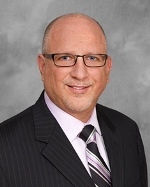 [Berger] The third party recruiter’s job is to surface viable candidates for the role. Perhaps they weren’t satisfied with that particular candidate and are looking for better fits or they may need multiple candidates to move along in the process. I have worked with one publicly traded company that always needs at least two candidates to advance to the final round. Whether that candidate is discussed or not would really depend on the recruiter/client relationship and past experience working together.
[Berger] The third party recruiter’s job is to surface viable candidates for the role. Perhaps they weren’t satisfied with that particular candidate and are looking for better fits or they may need multiple candidates to move along in the process. I have worked with one publicly traded company that always needs at least two candidates to advance to the final round. Whether that candidate is discussed or not would really depend on the recruiter/client relationship and past experience working together.
When the situation has been right to discuss someone who is in the process it may give the recruiter better insight as to what would be the best match or where the disconnect occurred.
[Faulkner] Depends on the relationship the third-party recruiter might have with the organization, but overall, I would say no. If they are under contract on retainer, I don’t believe the third-party recruiter has the right to present a candidate the organization found on its own. The third-party recruiter would be foolish to try to claim this candidate simply because they called the candidate. And speaking from the perspective of someone who gets far too many unsolicited offers for presenting candidates for positions for which we have great applicant flow, I think it does more harm than good for a third-party recruiter to try and hard-sell a candidate the organization has already interviewed.
If you’re the hiring manager, should you contact the third-party recruiter? Why or why not?
[Faulkner] First, it would depend on whether or not the organization has retained the third-party recruiter in this search. If they HAVE retained the third-party recruiter, a conversation would most likely happen because they would reach out to the hiring manager and ask about how the interview went with this person, because the recruiter had identified them as a potential fit and it is in the third-party recruiter’s best interest to refine the profile.
If the organization has NOT retained a third-party recruiter, it’s different. In general, the only time I would advise the hiring manager to reach out to an unsolicited candidate offer is if this third-party recruiter has become a nuisance and will not get the hint that the organization is not interested in working with him/her. If there is an in-house recruiting function, the hiring manager can contact the head of that group to handle the third-party recruiter.
[Berger] The hiring manager is the boss in this case and there should always be direct correspondence between them and who they select as their recruitment partner.
Any additional action that someone should take in this situation?
[Berger] It’s never over till it’s over. Don’t give up, and manage yourself in the process as you would want a candidate to interact with you if you were the hiring manager.
[Faulkner] It really depends on the irritant level of the third-party recruiter. From the candidate’s perspective, it’s good to maintain professionalism and thank the third-party recruiter for thinking of them and offer to connect online.
From the organization’s perspective, it’s best to set firm boundaries about how the organization works with third-party recruiters and ensure a single point of contact. Third-party recruiters are an important part of talent acquisition for many organizations, but it is in THEIR best interest to build relationships and learn about the needs of an organization rather than trying to poach business by sourcing without really knowing the status of a posting.
A big thanks to Alan and Mary for sharing their experience and expertise. Situations like these don’t happen very often, but they do happen. The best resolution involves good communication.
Image taken by Sharlyn Lauby while exploring Tampa’s Lowry Park Zoo
The post Offered Same Job by Two Different Recruiters – Ask #HR Bartender appeared first on hr bartender.






October 14, 2016
Take Inventory of What You Have – Friday Distraction
I’m not really into collecting stuff but I still find there are times when I look around the house and see clutter. So I picked up a copy of Marie Kondo’s best-selling book, “The Life-Changing Magic of Tidying Up: The Japanese Art of Decluttering and Organizing.” Can’t wait to start reading it.
One of the reasons I get frustrated with clutter is because I find that, when I have clutter, I make bad purchasing decisions. I buy things I don’t need because I didn’t realize I already had something similar. And not just when it comes to how many pairs of black pants I own. It also applies to business. Today’s Time Well Spent cartoon from our friends at Kronos is a perfect example.
How many times have we asked for a report when we already have the data in front of us? Or we ask for too much data because we don’t know what decisions we can make with the data we have? I’ve even seen companies buy software they didn’t need because they didn’t realize their existing technology already did it.
Data and technology are important. But more data and technology isn’t always better.
If we regularly request data from others, we need to be clear in the information we want and what we want to do with it. Not simply request data because we can. If we provide data to others, we need to understand how the data will be used. Ask people how they plan to use the information. It’s possible there’s a better way. Only open communication will help us know for sure.
Sometimes we have exactly what we need in inventory and don’t need to collect additional stuff. It’s possible that all we need to do is organize and declutter our business data.
The post Take Inventory of What You Have – Friday Distraction appeared first on hr bartender.






October 13, 2016
Career Journaling: 9 Tips to Start Today
A few years ago, I heard about the idea of career journaling during Ultimate Software’s Connections Conference. The idea really intrigued me, but I must admit I didn’t do anything with it. Then I ran across an article on The Muse titled “6 Ways Keeping a Journal Can Help Your Career” and it reminded me to actually do something.
So I decided that I was going to do a 30-day journaling activity and see what I learned. Now, before I tell you my takeaways, I wanted to share a few things that I learned about the journaling process itself.
Do your homework/research. I was so concerned about “rules.” Pffft. You’ll find that journaling isn’t about rules. But it is what you make it. So consider create a journaling Pinterest board to give you some creative inspiration.
Understand your goal. Why are you doing it? For me, I wanted to see if I liked it and if I would learn something. And I did – journaling is hard. Considering all the writing I do, I thought journaling would be easy. Nope. It’s a totally different type of writing.
Select the medium – paper, online, or both. I like paper so I purchased a Bullet Journal. But honestly, I didn’t need it for journaling. I could have used a Moleskin or one of the fancy notebooks we get as conference swag. And there were days I would have loved to type my thoughts versus writing them. Find what you like best.
Journaling doesn’t have to be pretty. I am envious of the journal pages with beautiful calligraphy. At some point, I had to come to terms with my handwriting. And while you don’t need an expensive pen, I did find that I loved writing with a nice pen.
Determine the format – free form or prompts. Some people will want to write about what they’re thinking or doing that particular day. I decided to find some writing prompts and wrote based on the prompt for the day. I’m not sure if one is better than another. But if you’re concerned about writer’s block, this could be an option.
Set a rule – you don’t have to journal every day. I understand the goal is to journal daily, but the real goal is to learn something from the journaling process. So if you have a terrible day and you don’t want to journal – don’t. But make a promise to journal the next day.
Don’t be your own grammar police. It’s okay to make a typo or mistake. Especially if you’re writing (versus online with spell check!) Just cross it out and rewrite it. Or don’t correct it at all. No one is editing your journal. It’s about putting your thoughts on paper.
Review/add to older journal posts. I mentioned in #5 that I used prompts for my journaling exercise. There were times when I went back to older posts and added to them. I felt it made the entry more relevant. Journals are a work in progress.
Occasionally, review your progress. At the end of each week, my journal entry prompt was “What did I learn this week?” Regularly ask the question to make sure journaling continues to accomplish your goals. Don’t be afraid to change your journaling to fit your needs.
I learned a lot during my 30-day journaling exercise. I loved journaling with prompts using bullet points. I didn’t realize it at the time, but my prompts were difficult! Even if you write for your job, journaling is different. Give it a try to see if it’s something you want to add to your personal career development.
Do you journal? Have you tried? Share your experience in the comments.
Image courtesy of Sharlyn Lauby and her career journal.
The post Career Journaling: 9 Tips to Start Today appeared first on hr bartender.






October 11, 2016
Is There Something Wrong with Employee Loyalty?
A few weeks ago, I wrote a post about the idea of “cultureboarding.” The concept being that organizations need to educate new hire employees about organizational culture. Preferably during their onboarding process.
Culture + Onboarding = Cultureboarding
After publishing the post, I discovered that some people found the term to be less than perfect. It reminded them of “waterboarding” and “brain washing”. One person said the term had a strong “drink the Kool-aid” vibe. Those comments really made me step back and think.

First, about the importance of words. I’d like to think everyone believes giving employees the tools to navigate in a new organizational culture is important. And it’s better to give employees the tools on Day One versus waiting until an employee makes a culture faux pas. So conceptually, I’m sure we’re all on the same page.
That being said, if the term conjures up a negative image…it will be tough to get buy-in. For example, when you greet someone, we often ask “How are you?” And many times a person will reply with “Excellent. Thank you.” I once did a consulting project with a company that had trained employees to always say “Excellent. Thank you.” to guests. As a result, “Excellent. Thank You.” became a negative reply. I know – hard to believe. But it’s true. We have to think about the words we use (and mash together) because what we call something is important.
The second thing I thought about is employee loyalty. I know of very successful organizations that want employees to “drink the Kool-aid” and I mean that in the nicest way possible. (Not in a Jonestown way.) After all, isn’t that the foundation of high employee engagement? The organization wants an employee to buy-into what the company is doing and how they make it happen. They want employees to be brand ambassadors. The company is totally loyal to their employees and they want employee loyalty for them.
It makes me think that cultureboarding is exactly the right term. The organization wants employees on board with the company culture. All in. 100 percent. This doesn’t mean employees can’t express concerns or suggestions for improvement. Those conversations are a normal part of healthy business conversation.
Maybe being an employee and raving fan is okay. Yes, you have to find the right words. And some people might not like the words you choose. The key is finding employees who believe the way the organization communicates is on target.
Image of Vince Vaughn courtesy of Unfinished Business
The post Is There Something Wrong with Employee Loyalty? appeared first on hr bartender.






Sharlyn J. Lauby's Blog
- Sharlyn J. Lauby's profile
- 10 followers




